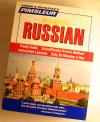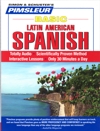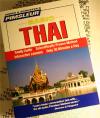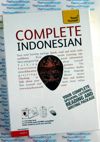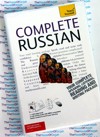Teach Yourself Old English - 2 Audio CDs and Book
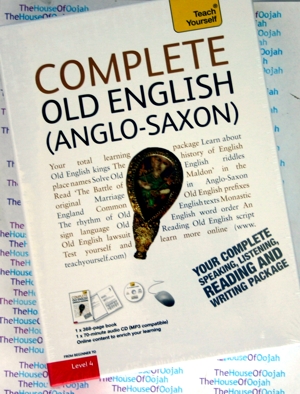
Teach Yourself Complete Old EnglishBook and 2 Audio CDs |
 |
Teach Yourself Complete Old English- 2 Audio CDs and BookBrand New: 2 Cds and Book A book and CD Pack, 'Teach Yourself Old English' is a self-access course for the independent adult learner who wants to learn to read Old English texts in the original. Texts of literary and historical interest are used to introduce the language, which is then explained in simple modern English, as it is not assumed that the student has learned a foreign language before. Exercises - written, audio, and pictorial - are used to reinforce learning. Short 'cultural context' items bring the culture of medieval England to life, and explain the relevance of Old English language and literature to speakers of modern English. Selected extracts in Old English feature on the audio CDs. * GRAMMAR IS CLEARLY EXPLAINED - in simple modern English Table of Contents: About the Author:Dr Mark Atherton is Lecturer in English Language and Literature at Regent’s Park College, Oxford University. A trained teacher, he has taught in Germany and Austria and has published widely in medieval studies and linguistics. About Old English LanguageOld English (also called Anglo-Saxon, Englisc by its speakers) is an early form of the English language that was spoken and written in parts of what are now England and southern Scotland between the mid-5th century and the mid-12th century. What survives through writing represents primarily the literary register of Anglo-Saxon. It is a West Germanic language and is closely related to Old Frisian. It also experienced heavy influence from Old Norse, a member of the related North Germanic group of languages. Old English was not static, and its usage covered a period of approximately 700 years (see Timeline of the Anglo-Saxon invasion and takeover of Britain) – from the Anglo-Saxon migrations that created England in the fifth century to some time after the Norman invasion of 1066, when the language underwent a dramatic transition. During this early period it assimilated some aspects of the languages with which it came in contact, such as the Celtic languages and the two dialects of Old Norse from the invading Vikings, who were occupying and controlling large tracts of land in northern and eastern England, which came to be known as the Danelaw. The most important force in shaping Old English was its Germanic heritage in its vocabulary, sentence structure and grammar which it shared with its sister languages in continental Europe. Some of these features were specific to the West Germanic language family to which Old English belongs, while some other features were inherited from the Proto-Germanic language from which all Germanic languages are believed to have been derived. Like other West Germanic languages of the period, Old English was fully inflected with five grammatical cases (nominative, accusative, genitive, dative, and instrumental, though the instrumental was very rare), which had dual plural forms for referring to groups of two objects (but only in the personal pronouns) in addition to the usual singular and plural forms. It also assigned gender to all nouns, including those that describe inanimate objects: for example, sēo sunne (the Sun) was feminine, while se mōna (the Moon) was masculine . A large percentage of the educated and literate population (monks, clerics, etc.) were competent in Latin, which was the scholarly and diplomatic lingua franca of Europe at the time. It is sometimes possible to give approximate dates for the entry of individual Latin words into Old English based on which patterns of linguistic change they have undergone. There were at least three notable periods of Latin influence. The first occurred before the ancestral Saxons left continental Europe for Britain. The second began when the Anglo-Saxons were converted to Christianity and Latin-speaking priests became widespread. The third and largest single transfer of Latin-based words happened after the Norman invasion of 1066, after which an enormous number of Norman words entered the language. Most of these Oïl language words were themselves derived from Old French and ultimately from classical Latin, although a notable stock of Norse words were introduced, or re-introduced in Norman form. The Norman Conquest approximately marks the end of Old English and the advent of Middle English. One of the ways the influence of Latin can be seen is that many Latin words for activities came to also be used to refer to the people engaged in those activities, an idiom carried over from Anglo-Saxon but using Latin words. This can be seen in words like militia, assembly, movement, and service. The language was further altered by the transition away from the runic alphabet to the Latin alphabet, which was also a significant factor in the developmental pressures brought to bear on the language. Old English words were spelt as they were pronounced; the "silent" letters in many Modern English words, such as the k in knight, were in fact pronounced in Old English. For example, the c in cniht, the Old English ancestor of the modern knight, was pronounced. Another side-effect of spelling words phonetically was that spelling was extremely variable – the spelling of a word would reflect differences in the phonetics of the writer's regional dialect, and also idiosyncratic spelling choices which varied from author to author, and even from work to work by the same author. Thus, for example, the word and could be spelt either and or ond. Old English spelling can therefore be regarded as even more jumbled than modern English spelling, although it can at least claim to reflect some existing pronunciation, while modern English in many cases cannot. Most present-day students of Old English learn the language using normalised versions and are only introduced to variant spellings after they have mastered the basics of the language. The second major source of loanwords to Old English were the Scandinavian words introduced during the Viking invasions of the 9th and 10th centuries. In addition to a great many place names, these consist mainly of items of basic vocabulary, and words concerned with particular administrative aspects of the Danelaw . The Vikings spoke Old Norse, a language related to Old English in that both derived from the same ancestral Proto-Germanic language. It is very common for the intermixing of speakers of different dialects, such as those that occur during times of political unrest, to result in a mixed language, and one theory holds that exactly such a mixture of Old Norse and Old English helped accelerate the decline of case endings in Old English. Apparent confirmation of this is the fact that simplification of the case endings occurred earliest in the North and latest in the Southwest, the area farthest away from Viking influence. Regardless of the truth of this theory, the influence of Old Norse on the English language has been profound: responsible for such basic vocabulary items as sky, leg, the pronoun they, the verb form are, and hundreds of other words. Traditionally, many maintain that the influence of Celtic on English has been small, citing the small number of Celtic loanwords taken into the language. The number of Celtic loanwords is of a lower order than either Latin or Scandinavian; distinctive Celtic traits have been argued to be clearly discernible from the post-Old English period in the area of syntax. Old English should not be regarded as single monolithic entity just as Modern English is also not monolithic. Within Old English there was language variation. Thus, it is misleading, for example, to consider Old English as having a single sound system. Rather, there were multiple Old English sound systems. Old English has variation along regional lines as well as variation across different time periods. For example, the language attested in West Saxon during the time of Æthelwold of Winchester, which is named Early West Saxon (or Æthelwoldian Saxon), is considerably different from the language attested in West Saxon during the time of Alfred the Great's court, which is named Late West Saxon (or Classical West Saxon or Alfredian Saxon). Furthermore, the difference between Early West Saxon and Late West Saxon is of such a nature that Late West Saxon is not directly descended from Early West Saxon (despite what the similarity in name implies). The four main dialectal forms of Old English were Mercian, Northumbrian (known collectively as Anglian), Kentish, and West Saxon. Each of those dialects was associated with an independent kingdom on the island. Of these, all of Northumbria and most of Mercia were overrun by the Vikings during the 9th century. The portion of Mercia and all of Kent that were successfully defended were then integrated into Wessex. After the process of unification of the diverse Anglo-Saxon kingdoms in 878 by Alfred the Great, there is a marked decline in the importance of regional dialects. This is not because they stopped existing; regional dialects continued even after that time to this day, as evidenced both by the existence of middle and modern English dialects later on, and by common sense – people do not spontaneously develop new accents when there is a sudden change of political power. However, the bulk of the surviving documents from the Anglo-Saxon period are written in the dialect of Wessex, Alfred's kingdom. It seems likely that with consolidation of power, it became necessary to standardise the language of government to reduce the difficulty of administering the more remote areas of the kingdom. As a result, paperwork was written in the West Saxon dialect. Not only this, but Alfred was passionate about the spread of the vernacular and brought many scribes to his region from Mercia in order that previously unwritten texts be recorded. The Church was affected likewise, especially since Alfred initiated an ambitious programme to translate religious materials into English. In order to retain his patronage and ensure the widest circulation of the translated materials, the monks and priests engaged in the programme worked in his dialect. Alfred himself seems to have translated books out of Latin and into English, notably Pope Gregory I's treatise on administration, "Pastoral Care". Because of the centralisation of power and the Viking invasions, there is little or no written evidence for the development of non-Wessex dialects after Alfred's unification. Modern-day Received Pronunciation is not a direct descendant of the best attested dialect, Late West Saxon. It is rather a descendent of a Mercian dialect — either East Mercian or South-East Mercian. Thus, Late West Saxon had little influence on the development of Modern English and the developments occurring in its antecedent, Middle English. |
Teach Yourself Complete Old English- 2 Audio CDs and Book |

 0 Items (Empty)
0 Items (Empty)
